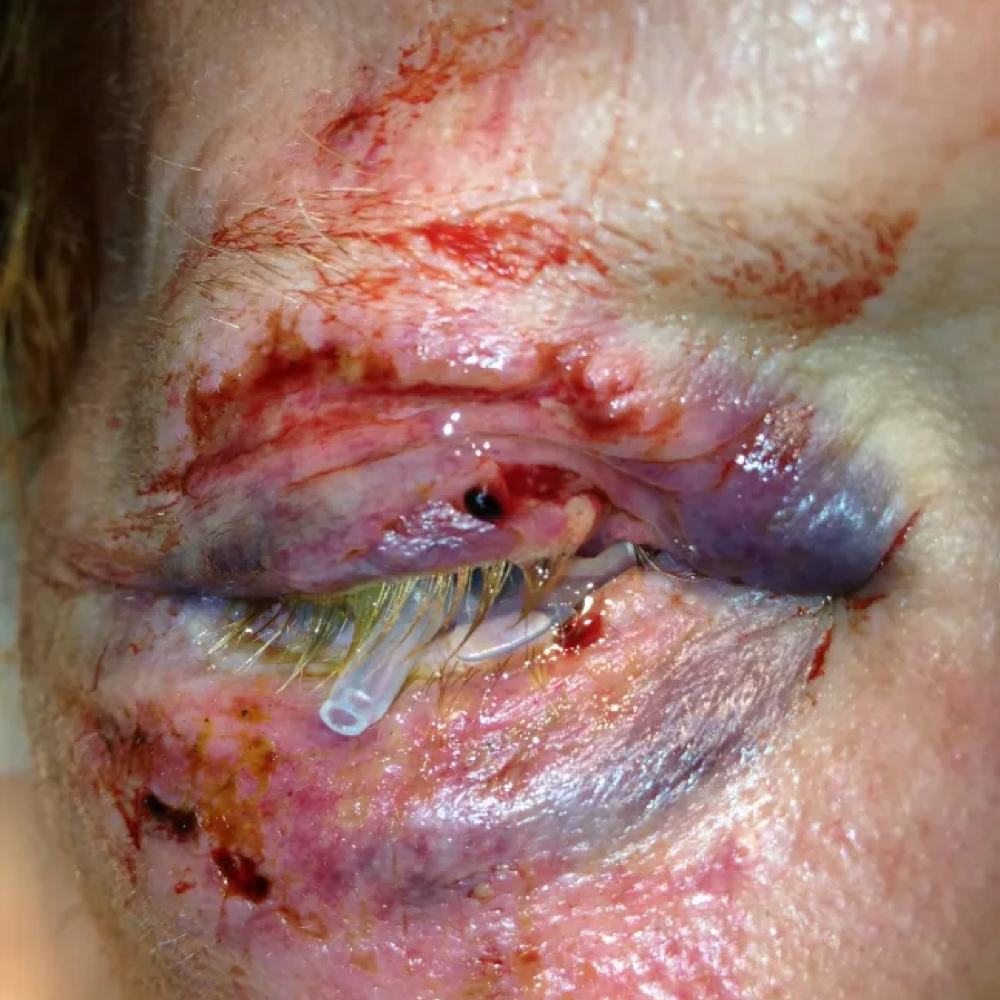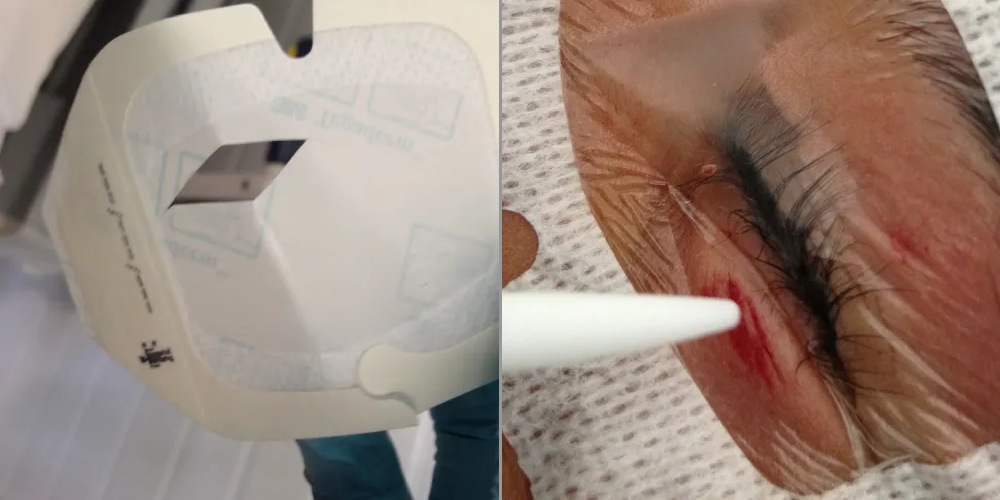Brief Summary
Eyelid lacerations are subject to complications if the proper safeguards are not employed. The techniques listed below help avoid misdiagnosing subtle complications or causing iatrogenic injury during repair.Indications
Lacerations of the superior and inferior lids and the eye adnexa.Contraindications
Lacerations that involve the eyelid margins or the canalicular system should be evaluated by an Ophthalmologist. Be wary of wounds near the bridge of the nose or within 8 mm of the medial canthus. Additionally, periorbital lacerations of the eyelid with fat protruding from the wound are concerning for penetration of the orbital septum. Superior lid lacerations complicated by ptosis on clinical exam suggest a levator palpebrae injury.Technique Description
Eye Shields

Morgan lens used as a shield to prevent iatrogenic globe injury.
Skin Adhesive
Adhesive glue can be used to repair minor eyelid lacerations but can be complicated by gluing the eye shut or involving the lashes if not done carefully. Consider cutting a small window into a Tegaderm to protect the surgical field. If adhesive does enter the eye, use petroleum jelly or acetone to loosen the glue.
Using transparent film dressing to protect eye when using dermal adhesive.